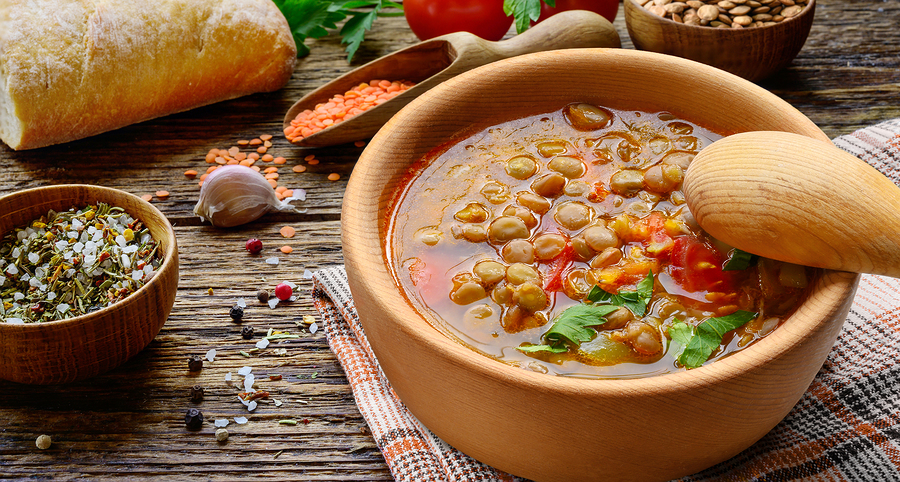
Do you consume enough fiber each day? Most people would respond, "Maybe not." The recommended Adequate Intake (AI) is 25 grams for women and 38 grams for men per day. The average person may only consume 17 grams daily, and those following a low-carbohydrate diet may only consume 10 grams. The normal American diet is high in sugar, processed carbs, fat, and protein. By avoiding high fiber foods that are also rich in micronutrients like vitamins, minerals, and phytochemicals, a low fiber diet misses out on a great potential for disease prevention and good health. However, making the switch to meals that place a greater emphasis on fruits, vegetables, and grains in order to include more fiber requires some introspection on one's diet. Getting better
Dietary fiber
is a broad category of substances that cannot be broken down by human enzymes in the small intestine, including complex polysaccharides and lignin (which provides cellular structure to plants, trees, and crunch to carrots). Different fiber types are categorized as either water soluble or insoluble. Some water soluble fibers are digested by gut bacteria into short chain fatty acids, which have a caloric value of two per gram. Per gram of digestible carbs, there are 4 calories.
When digested, water soluble fiber draws water and turns into a gel, which slows down digestion and increases satiety. As a result, it assists in restoring normal blood glucose and insulin responsiveness, particularly for those with diabetes. Oat bran, fruits including apples, bananas, and strawberries, vegetables, lentils, peas, beans (legumes), nuts, seeds, and barley all contain soluble fiber.
A water-soluble fiber supplement called psyllium is also advantageous since it lowers cholesterol by binding cholesterol for intestinal elimination. Additionally, it raises blood pressure and helps diabetics control their blood glucose levels. It is best taken without food as it may interfere with the absorption of medications.
Insoluble fiber found in bran, skins of fruits and vegetables, cereals and whole grains contributes bulk to the stool and helps food pass through the intestinal track more quickly contributing to bowel regularity. Insoluble fibers do not provide calories.
A plant-based diet offers a variety of fiber sources that support a balanced gut microbiota. These indigestible fibers, which are also referred to as "prebiotics," promote the diversity and activity of healthy gut flora, which is advantageous to overall health.
Breast and colorectal cancers are resistant to fiber. A greater fiber diet reduces the exposure to carcinogens since the colon eliminates waste more quickly and fiber traps potential carcinogens. A balanced microbiome seems to mitigate the effects of dangerous bacteria that could promote cancerous activity. By boosting the elimination of circulating estrogen, meals high in fiber and low in fat lower the risk of breast cancer.
A diet high in fiber from plants makes you feel more satisfied and full. This might be translated
Tips to Increase Fiber for a Healthy Gut
- If your current diet is low fiber, gradually ease into adding fiber.
- Read food labels. Fiber is listed under carbohydrates.
- Have three servings of fruit a day. You not only end up with 9 to 12 grams of fiber, but a lot of vitamins, minerals and phytochemicals.
- Enjoy oatmeal with walnuts and fruit for breakfast.
- Make sandwiches with whole wheat bread. Read bread labels. Some whole wheat breads have more fiber than others.
- Have several meals with beans or lentils every week. Legumes and lentils are fiber superstars.
- Have at least one large salad a day.
- Make a dose of psyllium part of your routine. Check with your healthcare provider if you have digestion concerns.
Adequate Intake (AI) is a value based on observed or experimentally determined approximations of nutrient intake by a group (or groups) of healthy people.

Vegetable Fresh Lentil Salad
- In a saucepan add 1 cup of French or brown lentils with enough water to cover by 1 inch. Cover, bring to boil, reduce to a simmer for 15 to 20 minutes until lentils are al dente. Drain and cool.
- Toss with 1 cup diced carrots, 1 cup diced cucumber or celery, 1/2 cup diced red pepper, 1/4 cup diced green onions, 1/2 cup cherry tomatoes cut in half. Before serving add dressing to taste. Garnish with chopped walnuts and feta cheese.
- Make dressing with 1/3 cup olive oil, 2 Tbsp. red wine vinegar, 1 tsp. honey, 2 tsp. Dijon mustard, 1 tsp. minced garlic, salt and pepper to taste. Makes 4 to 6 servings. Approximately 10 to 15 grams fiber.
Written by: Mimi Cunningham, Registered Dietitian-Nutritionist, Diabetes Educator
No comments:
Post a Comment
if You Have Any Doubit.Please let me know